In the military, there is no women's work, only work. In order to do the little repairs that their uniforms or bags might need, men had simple sewing kits called "housewifes" or "hussifs". In the military, hussifs may be issued by the government, but they might also be made by the man himself or by his wife, mother, or sister, to send him on his way with a tangible reminder of love. In this moving blog post on Hands Across the Sea, Tom Suddes, formerly of the British Royal Navy, reminisces about his initiation in the 1960's, and shows off his military-issue, but hand-embroidered, hussif. The act of chain-stitching over his name was an early test of his willingness to learn new things, his dexterity, and his patience, and so it became part of his military training. THE NAME "Housewife" is the usual term, an obvious allusion to what the men thought a flesh-and-blood housewife was for: mending clothes. (For such lack of imagination, they can be forgiven... many joined the service young and didn't know any better! Fifteen year old girls probably think husbands are for opening tight jars.) Englishmen, with cavalier disdain for consonant clusters, pronounced "housewife" as "hussif", and that spelling is also attested. Many may have spelled it "housewife" and pronounced it "hussif", in the same way they'd spell "gunwale" and say "gun'l" or spell "forecastle" and say "foc's'l". It can also be called a sewing kit or a needle book. MEN'S vs WOMEN'S Of course women had sewing kits, too! And many would have made their own, as a nice use of scrap fabric, a reminder of the stitches in their repertoire, or just a useful item. However, women's kits tended to be larger and more comprehensive than men's, since sewing was an occupation not an occasional need. And they wouldn't call them hussifs, but kits or baskets. WHAT GOES IN A HUSSIF? The basics:
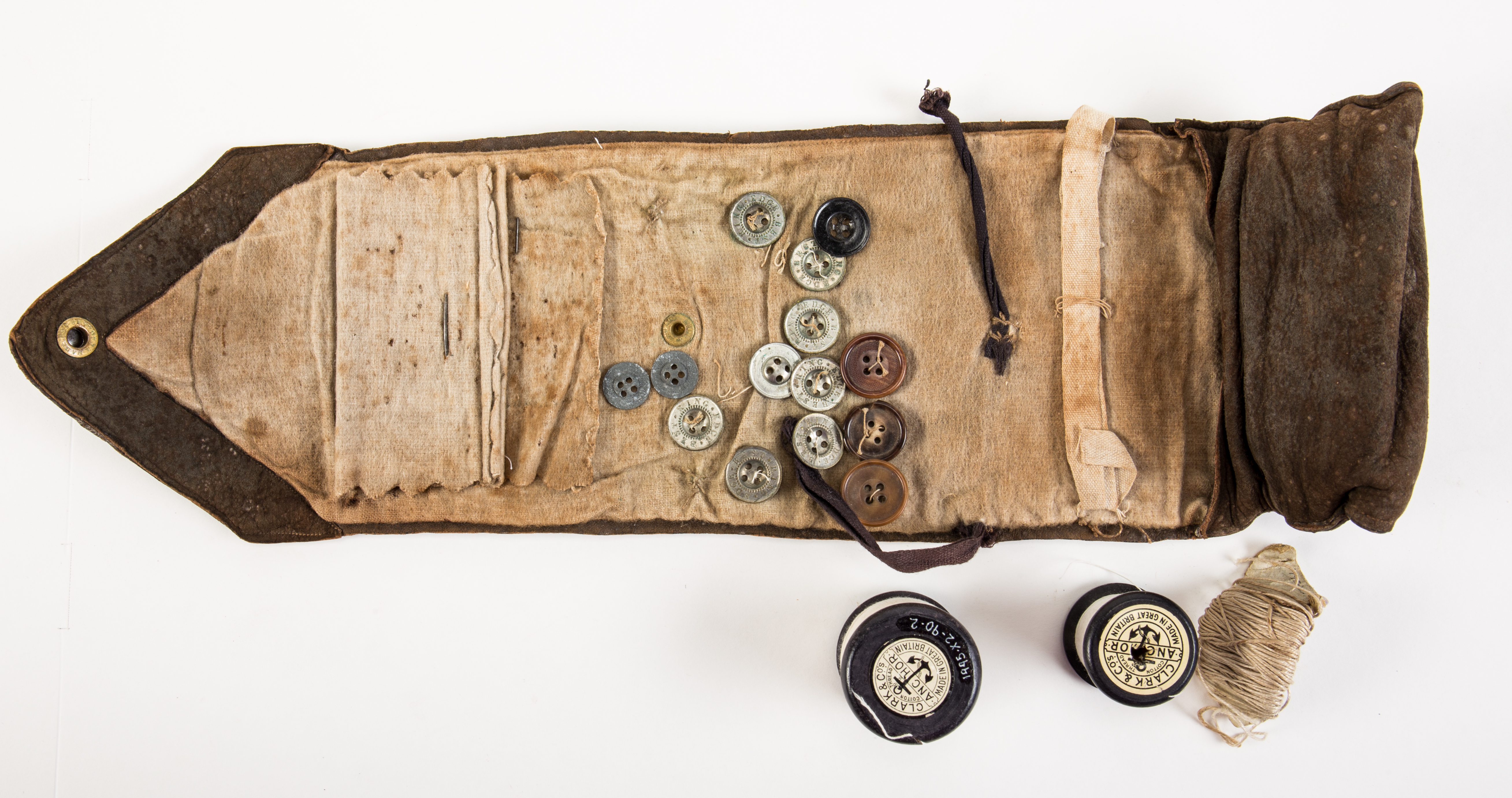 Military sewing kit or housewife (hussif), 1NZEF, WW1 sewing kit of brown suede with three reels of cotton, buttons, thread and needles comprises holder, cotton reels, seven metal buttons, three plastic buttons, wad of thread, and needles. Auckland Museum [CC BY 4.0 (https://creativecommons.org/licenses/by/4.0)], via Wikimedia Commons In this video, Keith H. Burgess shows his hussif which he uses for historical reenacting (New England Colonial Living History Group, 1680-1760). He has a long preamble; skip to 3:58 if you just want to see him display it and talk about what's in it. Since he roleplays an early settler, his hussif contains sinew for mending moccasins. MY NEEDLE BOOK Here is my own needle-book. Since it's not complete with scissors and notions, I don't think of it as a hussif. I've designed it with a tri-fold, with sharps on the far left, ball-point (or just dull) needles along with pins and safety pins in the middle, and specialty needles on the far right. I keep my Tulip brand hand-sewing needles in the little plastic tubes they come in because they're double-plus-special! A HUSSIF FOR A FRIEND Several years ago, I made a hussif for a friend. Unlike me, he does not have a whole dang room filled with sewing stuff, so he just needed something to hold a few basics. He has kindly shared some pictures for this blog. The $10 bill is there for scale. The fabrics I used for this were all from stash, and were in some cases such small bits that creative piecing was needed. I chose a blue cotton (rayon?) chambray and a blue brocade for the outside, and a buff colored canvas for the interior. Black faux fleece functions as a needle-holder. Some moire taffeta furnishes the inside with ribbony strips, and blue embroidery floss highlights details in the construction. I made the whole thing by hand. The next several pictures show what you discover when opening the hussif.
And here's the outside: It has been a long time, so I can't remember now whether I interlined it with anything for body, but I suspect I used more of the black "fleece". Seems like something I would do. MODERN USES AND SIMILAR OBJECTS In the modern day, I use my hussif/needle-book all the time for storage. I also bring it whenever I attend a wedding or go camping. Invariably, somebody will need something fixed, and the girl with the hussif might as well be wearing a cape and flying in with a theme song!
The idea of a roll of fabric holding useful items is also still widely used, in tool rolls, and make-up brush kits, and paintbrush holders.
2 Comments
|
Karen Roy
Quilting, dressmaking, and history plied with the needle... Sites I EnjoyThe Quilt Index Categories
All
Archives
March 2024
|

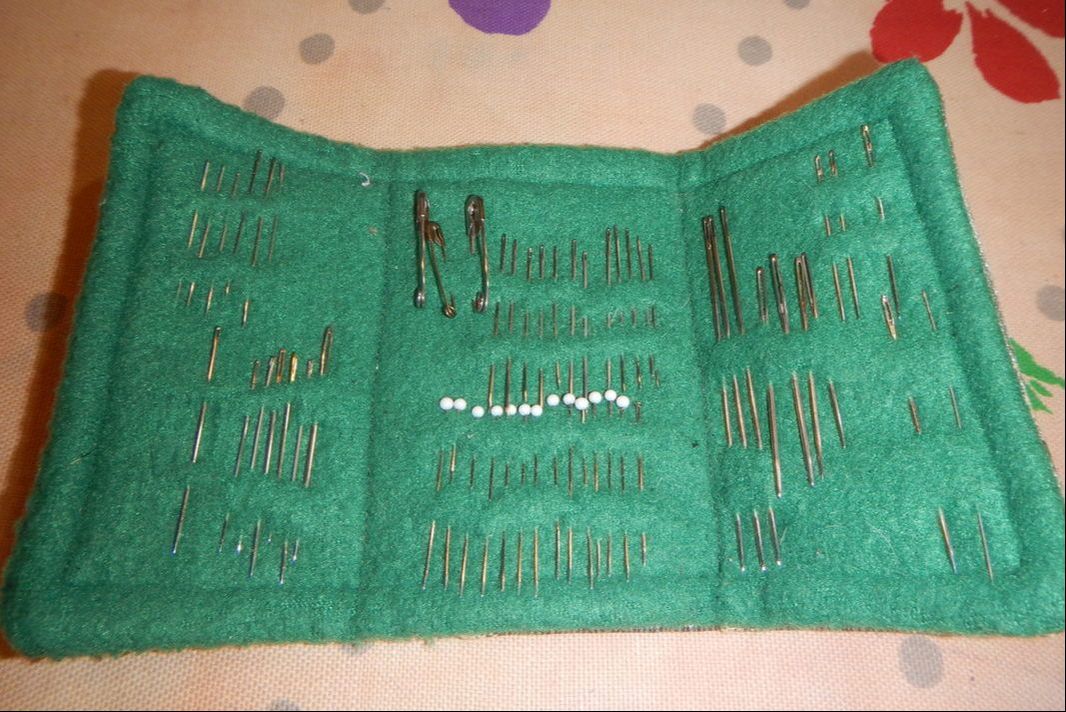
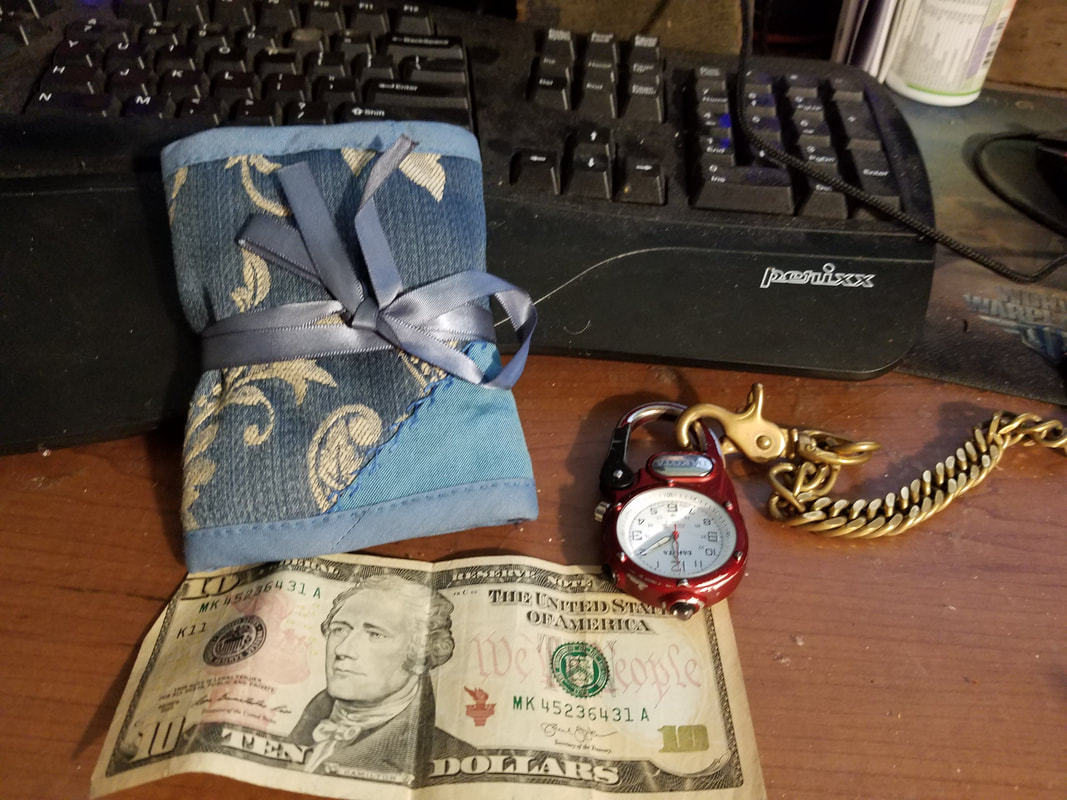
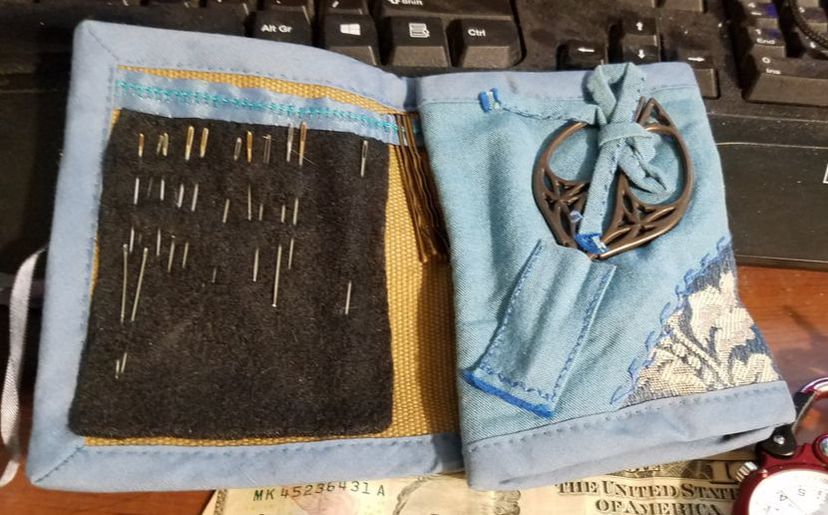
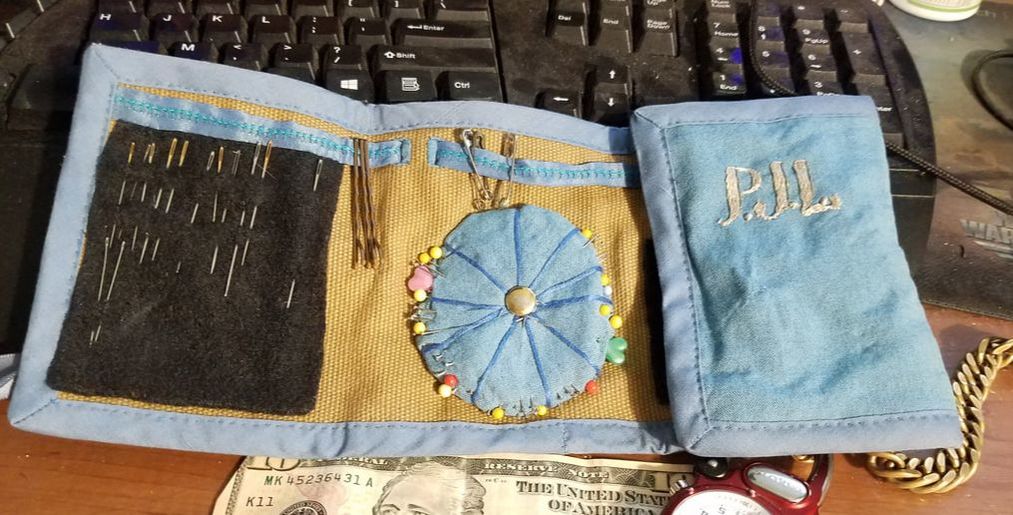
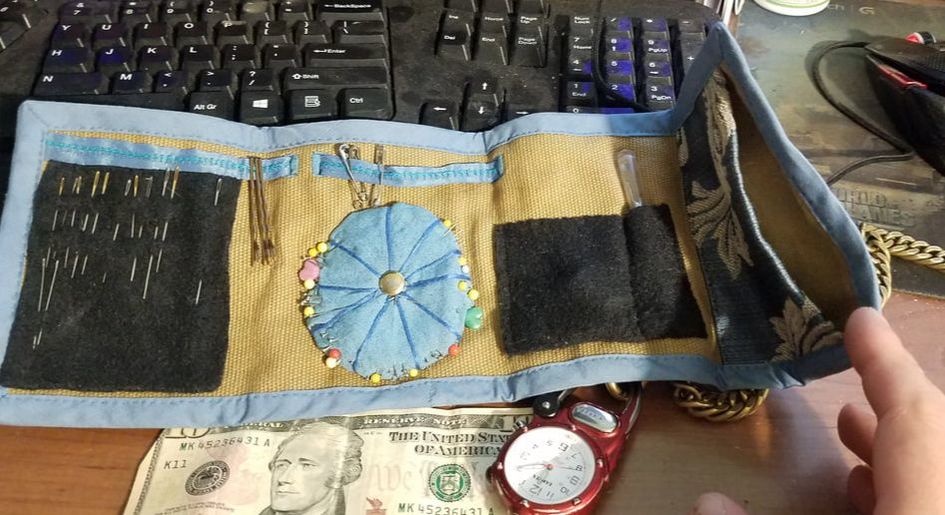
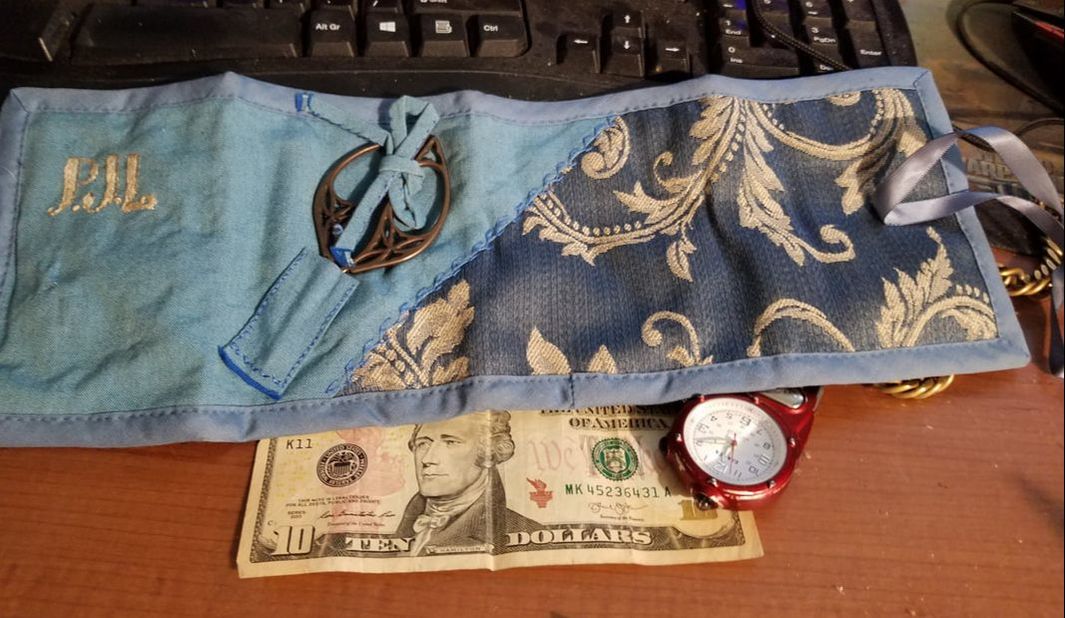
 RSS Feed
RSS Feed